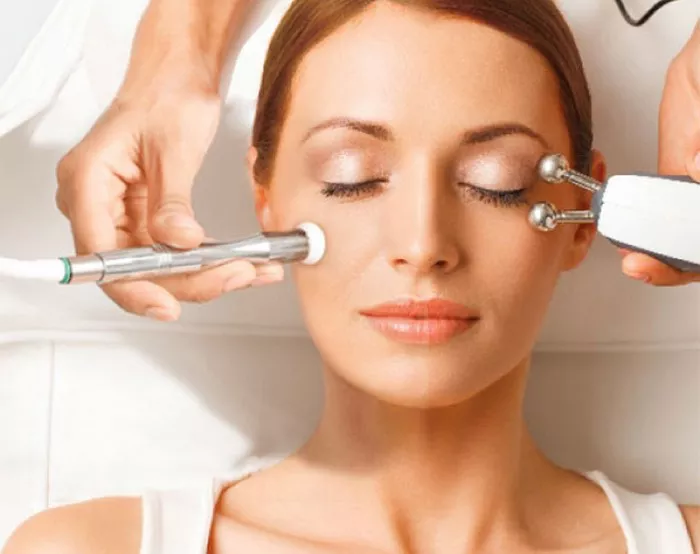Microdermabrasion is a popular skincare treatment that helps improve the appearance of the skin by exfoliating and removing dead skin cells. While professional microdermabrasion treatments are available at dermatology clinics and spas, many individuals also opt to use at-home microdermabrasion machines for convenience and cost-effectiveness. If you’re considering using a microdermabrasion machine at home, it’s important to understand how to properly use the device to achieve optimal results and avoid any potential complications. In this step-by-step guide, we will walk you through the process of using a microdermabrasion machine effectively.
Step 1: Prepare Your Skin
Before using a microdermabrasion machine, it’s crucial to prepare your skin properly. Start by cleansing your face with a gentle cleanser to remove any dirt, oil, or makeup. Pat your skin dry with a clean towel.
Step 2: Familiarize Yourself with the Machine
Read the manufacturer’s instructions and become familiar with the specific features and settings of your microdermabrasion machine. Different machines may have variations in design and operation, so it’s essential to understand how your specific device works.
Step 3: Adjust the Settings
Most microdermabrasion machines come with adjustable suction and intensity settings. Begin with the lowest settings and gradually increase the intensity as needed, depending on your skin’s tolerance. It’s important to start gently and avoid excessive suction or pressure, which can potentially cause skin irritation or damage.
Step 4: Start with a Patch Test
Performing a patch test is recommended, especially if you have sensitive skin or are using the machine for the first time. Select a small area on your face, such as the jawline or cheek, and perform a few passes with the machine to assess how your skin reacts. If there is no adverse reaction after 24 hours, you can proceed with the treatment on the rest of your face.
Step 5: Begin the Treatment
Hold the microdermabrasion wand or applicator firmly but gently against your skin, ensuring proper contact. Move the wand in upward or circular motions, covering the entire treatment area. Avoid staying in one spot for too long to prevent over-exfoliation.
Step 6: Pay Attention to Targeted Areas
If you have specific areas of concern, such as fine lines, wrinkles, or acne scars, you can give them extra attention during the treatment. Use the wand to make additional passes over these areas, but be cautious not to apply excessive pressure or cause discomfort.
Step 7: Keep the Skin Taut
To enhance the effectiveness of the microdermabrasion treatment, it’s helpful to keep the skin taut while using the machine. This can be achieved by using your free hand to gently stretch the skin in the treatment area, allowing the wand to glide smoothly.
Step 8: Avoid Sensitive Areas
Be cautious when treating sensitive areas of the face, such as around the eyes, lips, and nostrils. These areas are delicate and may require a lower intensity setting or a different attachment specifically designed for sensitive skin.
Step 9: Pay Attention to Sensations
Pay attention to any sensations or discomfort during the treatment. It is normal to experience a slight tingling or mild scratching sensation as the microdermabrasion machine exfoliates the skin. However, if you experience pain, excessive redness, or irritation, stop the treatment immediately and consult with a dermatologist.
Step 10: Aftercare and Moisturization
After completing the microdermabrasion treatment, rinse your face with cool water to remove any remaining exfoliated skin cells. Gently pat your skin dry with a clean towel and apply a soothing moisturizer to help hydrate and calm the skin. Avoid using any harsh or abrasive skincare products immediately after the treatment.
Step 11: Follow a Regular Treatment Schedule
For optimal results, it’s important to follow a regular treatment schedule. Depending on your skin’s needs and sensitivity, you may perform microdermabrasion treatments once a week or every two weeks. Consistency is key to achieving long-term improvements in skin texture and appearance.
Step 12: Clean and Maintain Your Machine
After each use, clean the microdermabrasion machine according to the manufacturer’s instructions. This usually involves removing the filter and cleaning it, as well as wiping down the wand or applicator with a mild disinfectant or alcohol wipe. Proper maintenance will help ensure the longevity of your device and prevent the buildup of bacteria or debris.
Important Considerations
While using a microdermabrasion machine at home can be a convenient option, there are important considerations to keep in mind:
Consult with a Dermatologist: If you have any underlying skin conditions or concerns, it’s advisable to consult with a dermatologist before using a microdermabrasion machine. They can provide personalized recommendations and ensure that the treatment is safe and suitable for your skin type.
Sun Protection: After undergoing a microdermabrasion treatment, your skin may be more sensitive to the sun. Apply a broad-spectrum sunscreen with an SPF of 30 or higher and limit sun exposure to protect your skin.
Gradual Intensity Increase: It’s important to start with lower intensity settings and gradually increase as your skin becomes accustomed to the treatment. This approach helps minimize the risk of skin irritation or damage.
Individual Results: Results may vary depending on your skin type, concerns, and the specific microdermabrasion machine you use. It’s important to manage your expectations and understand that multiple treatments may be necessary to achieve desired results.
In conclusion, using a microdermabrasion machine at home can be an effective way to exfoliate and rejuvenate the skin. By following these step-by-step instructions, adjusting the settings appropriately, and paying attention to your skin’s reactions, you can safely and effectively incorporate microdermabrasion into your skincare routine. However, it’s important to consult with a dermatologist if you have any doubts or concerns regarding your specific skin condition or the use of the machine.

